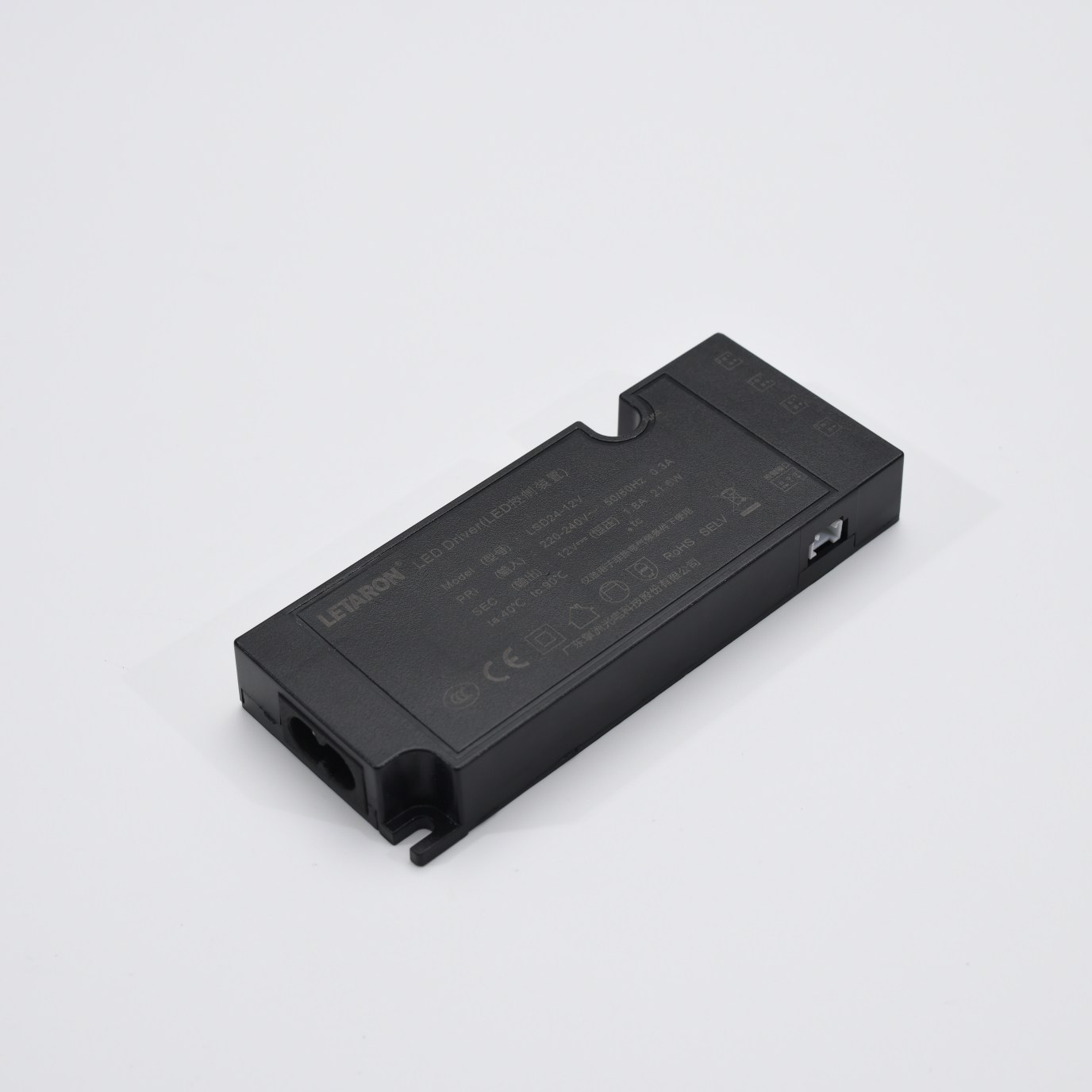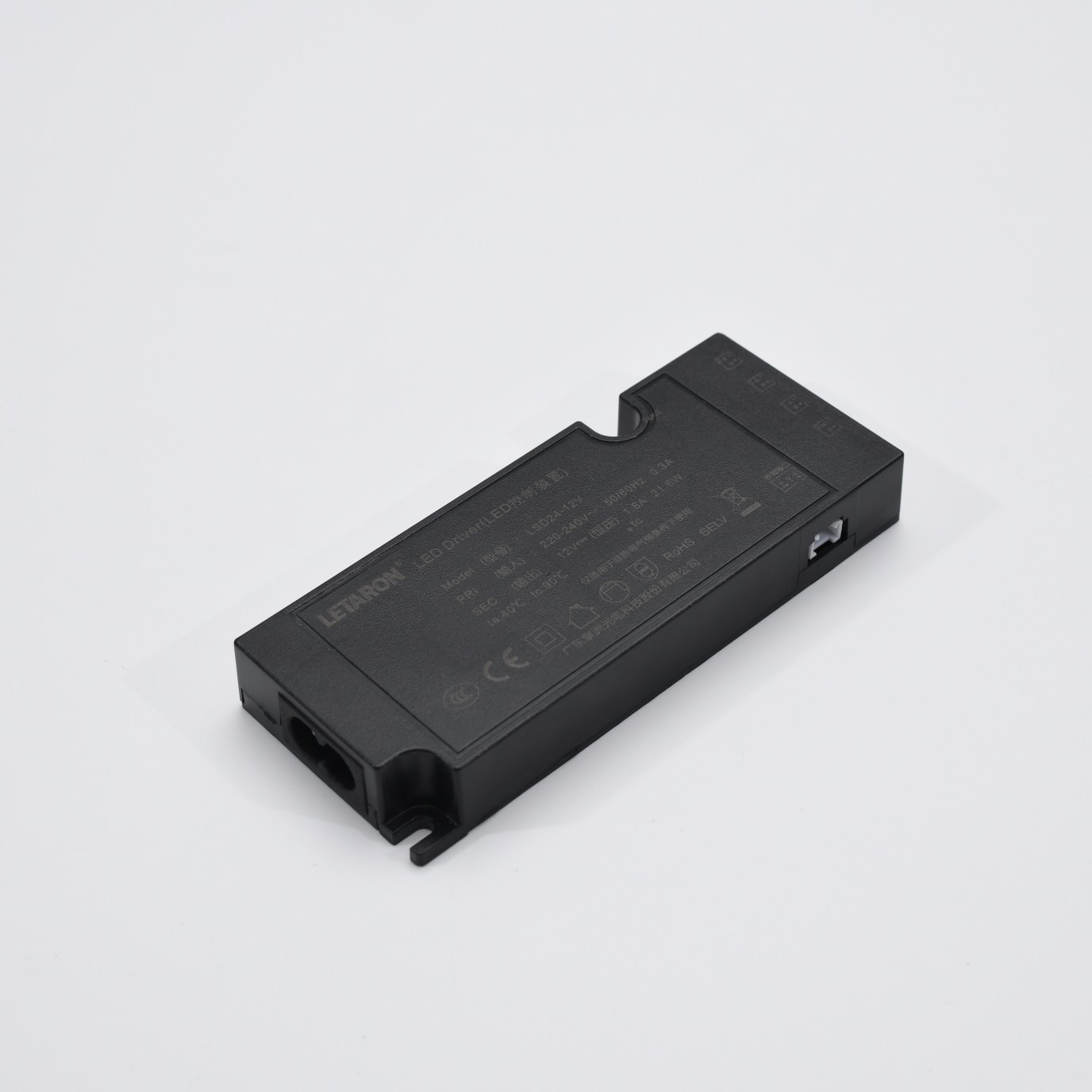

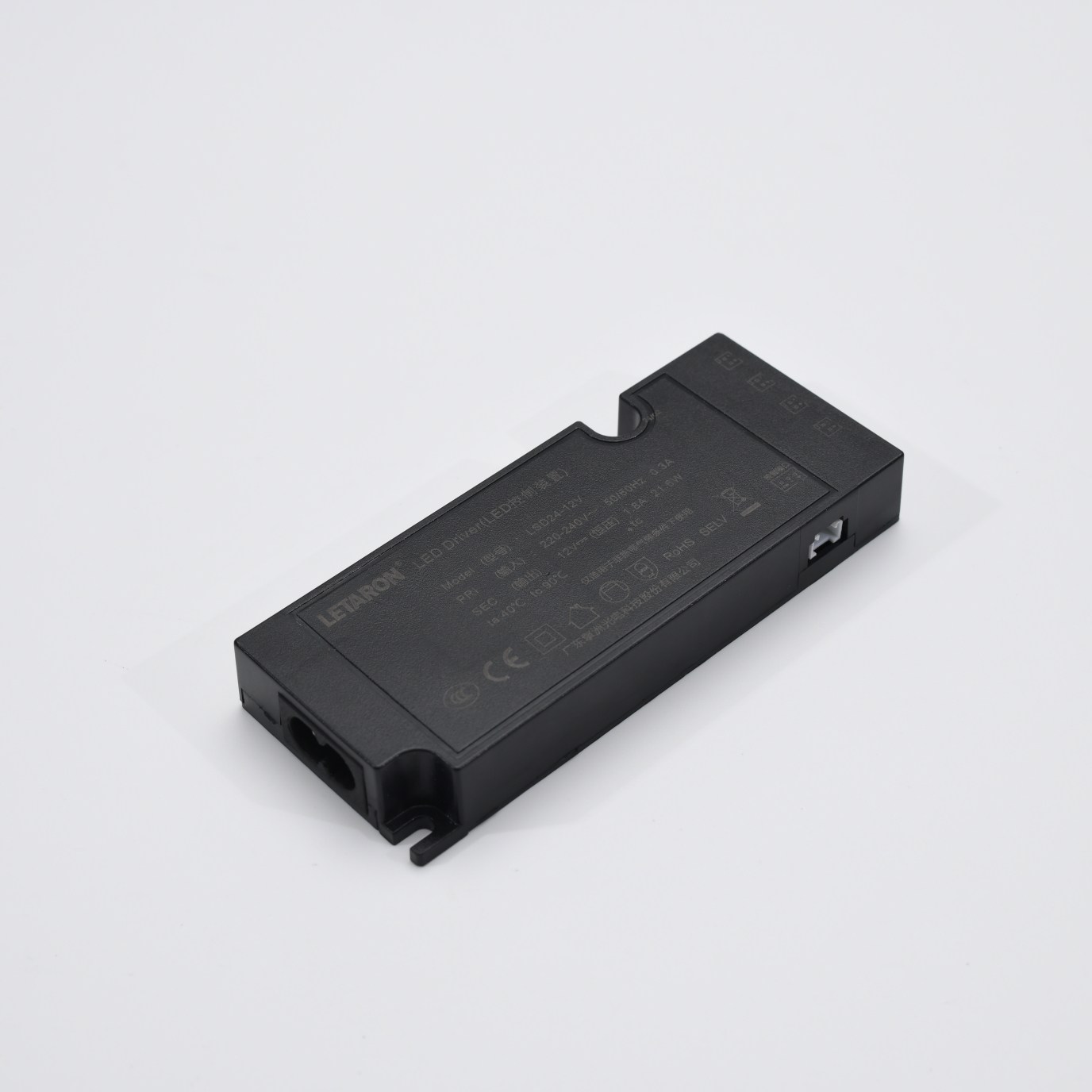
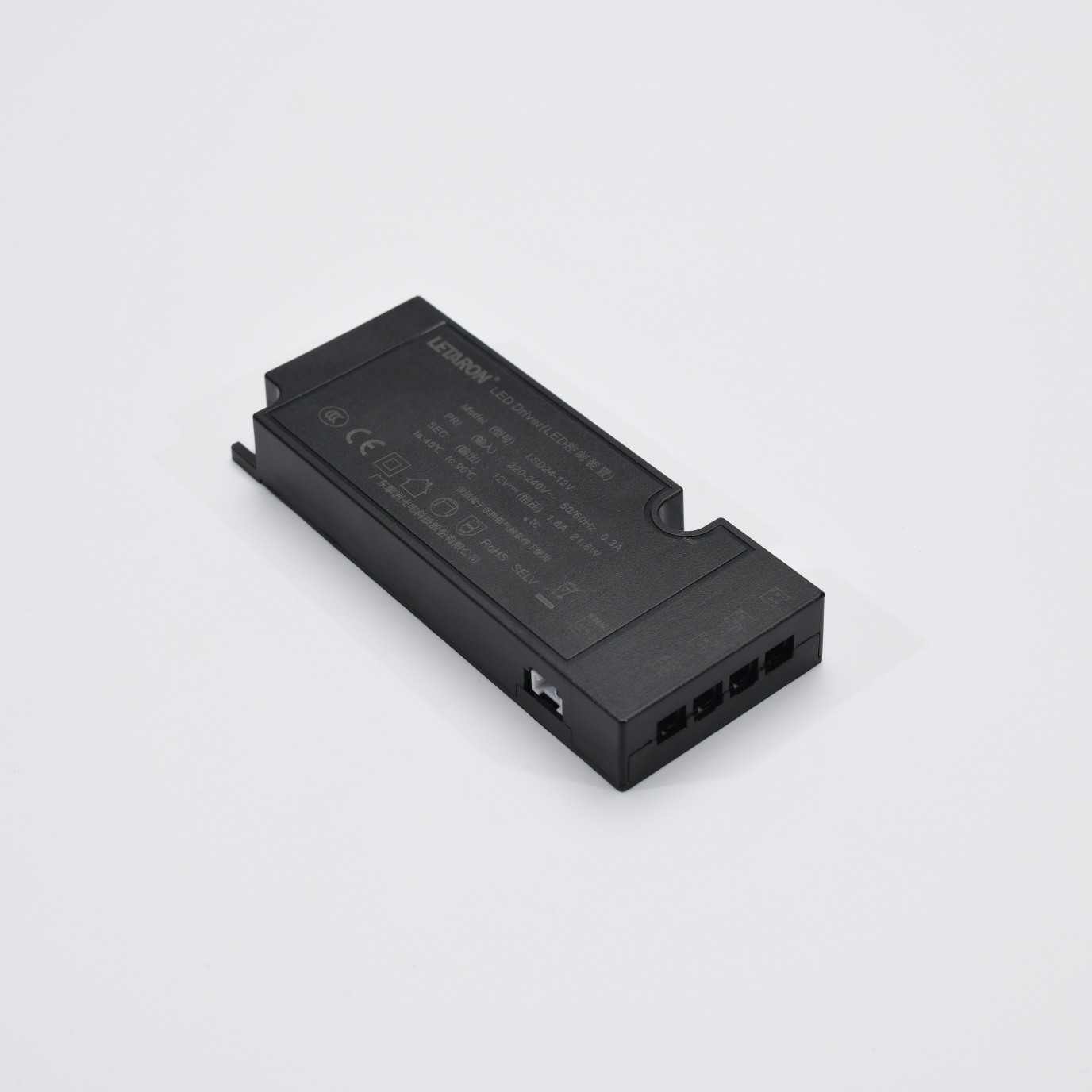



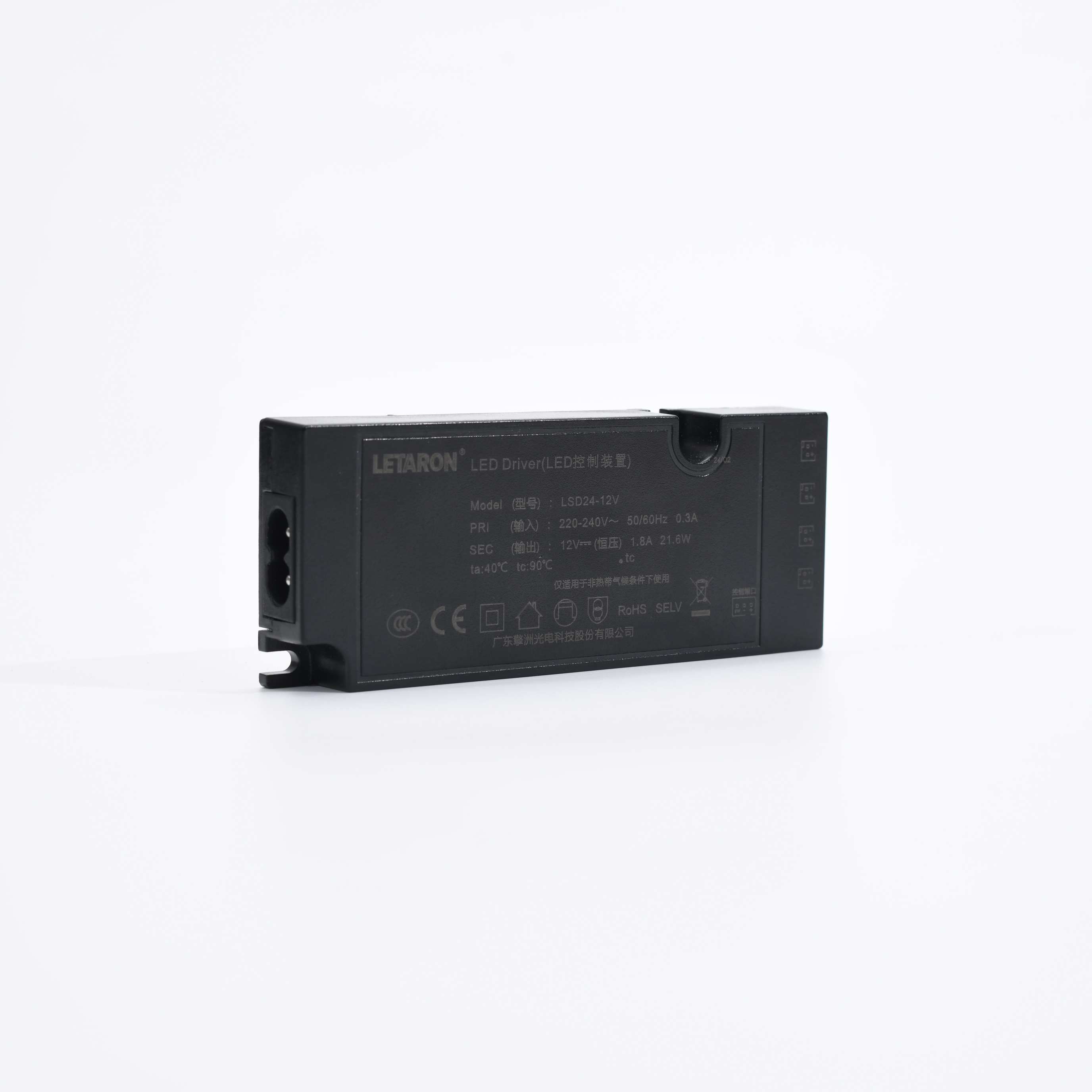
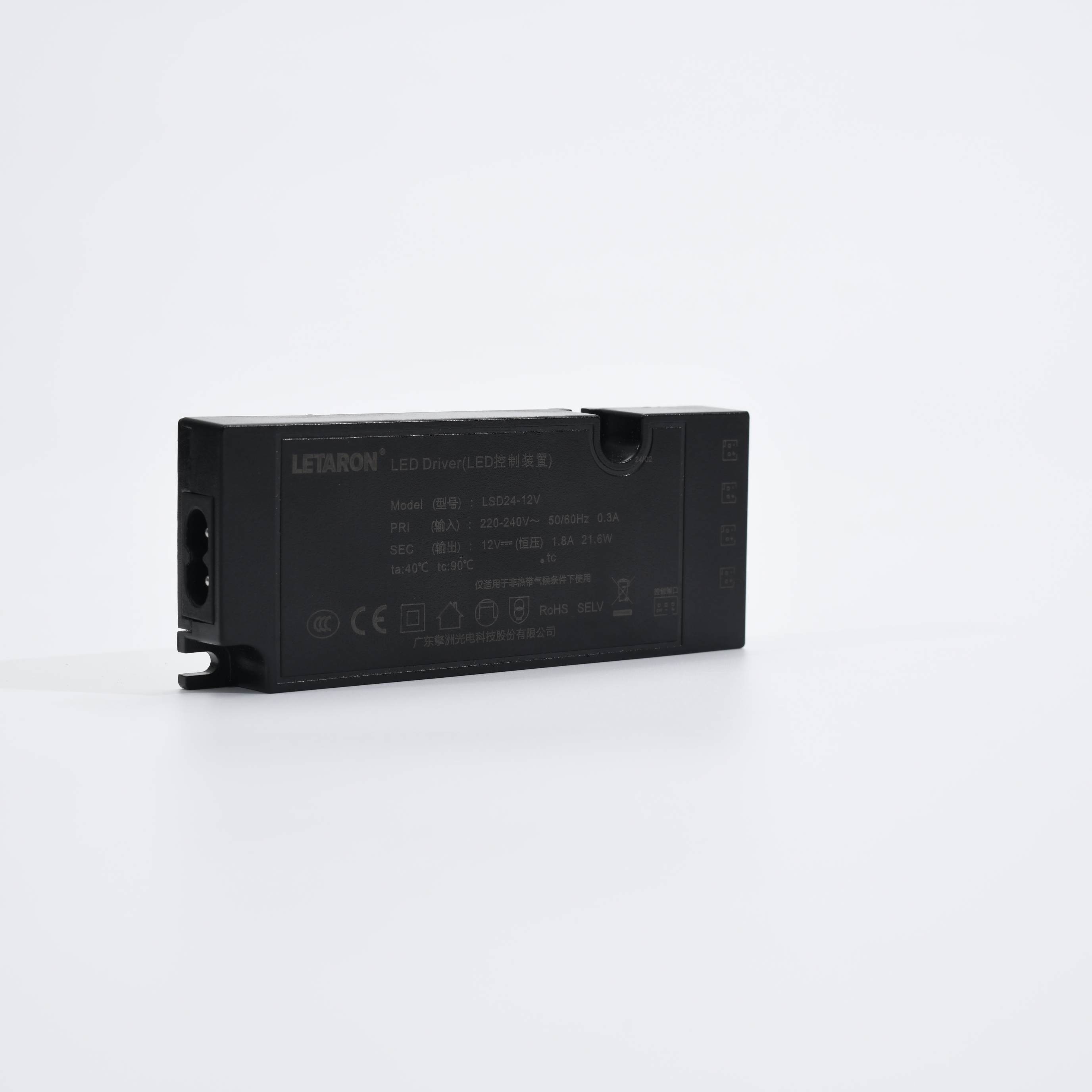

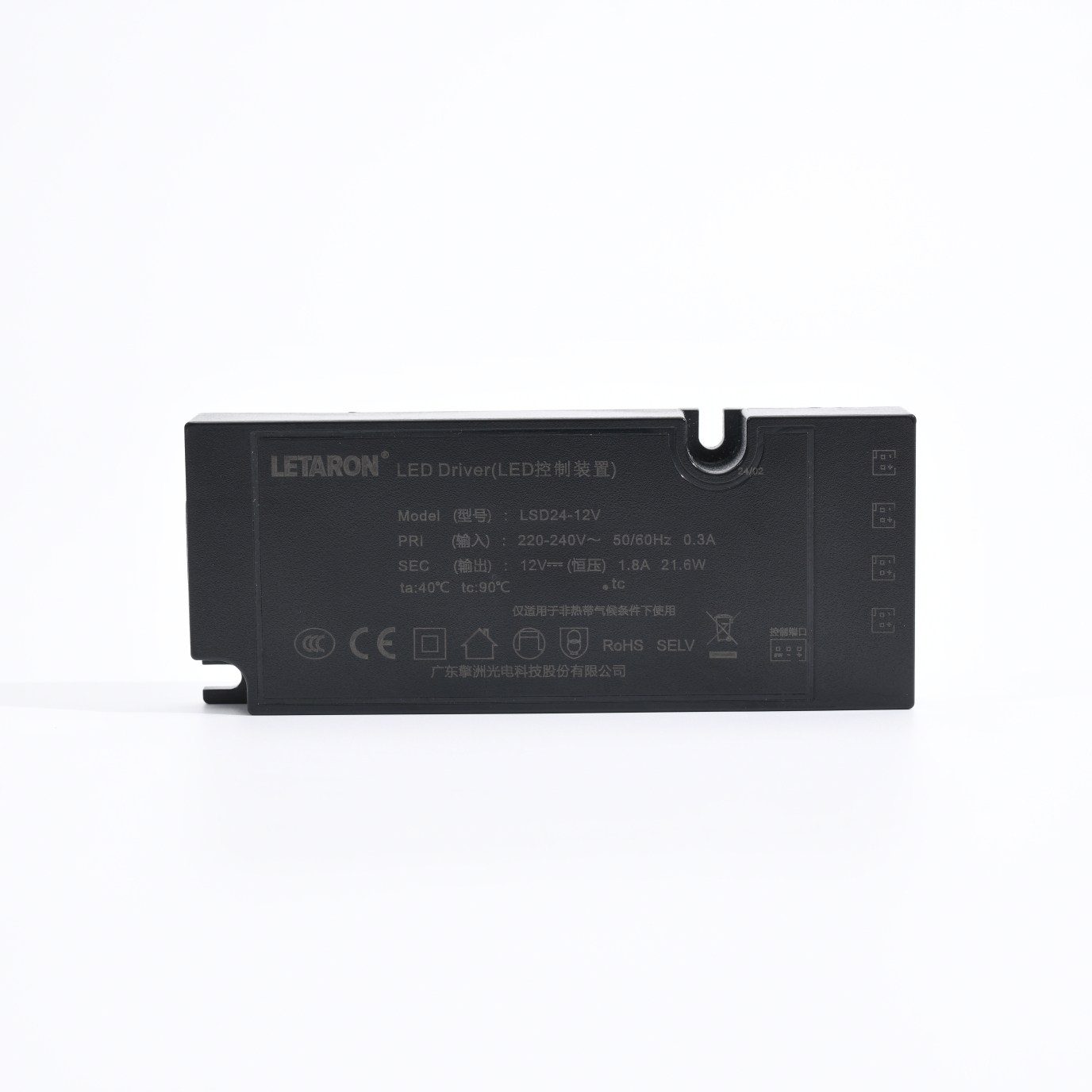
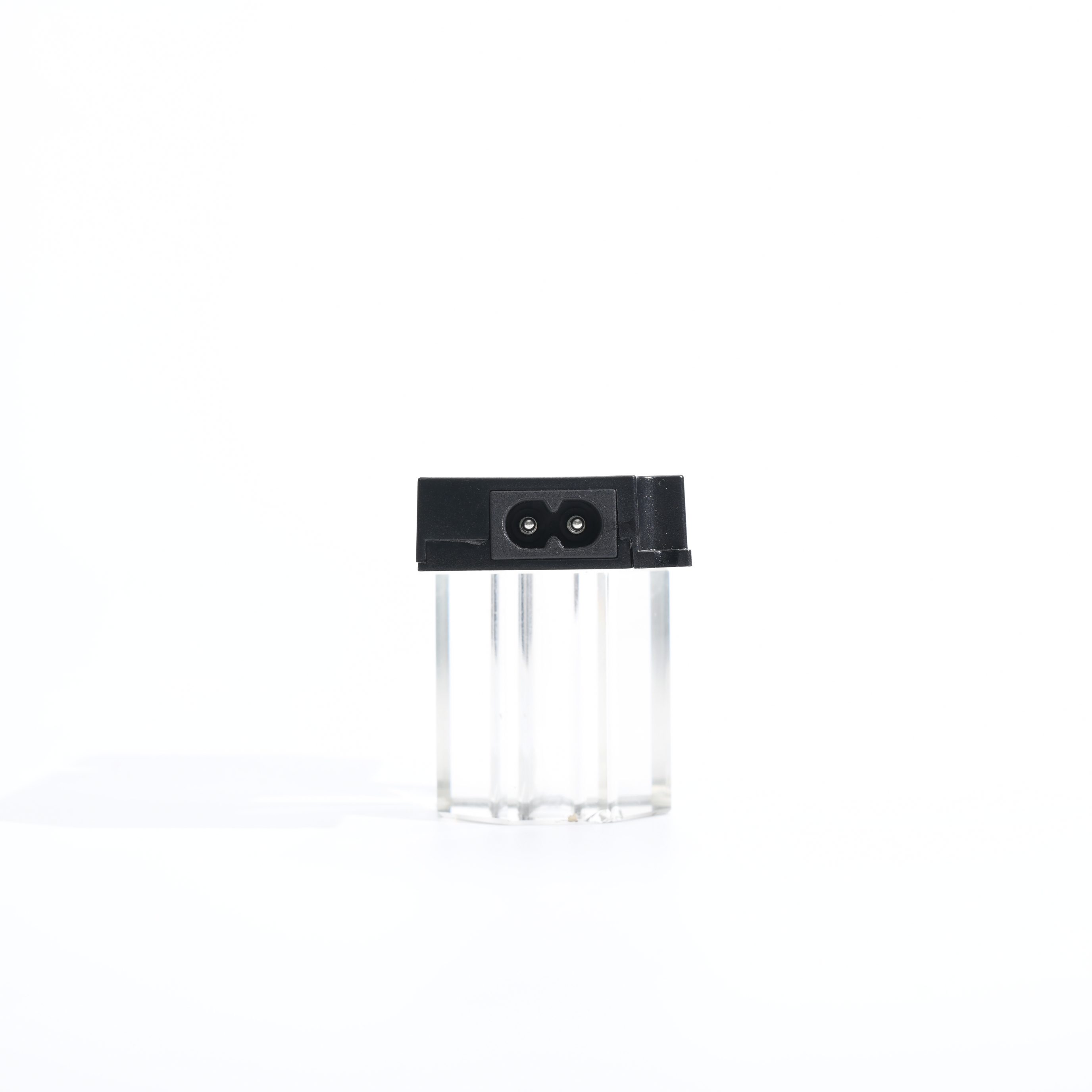

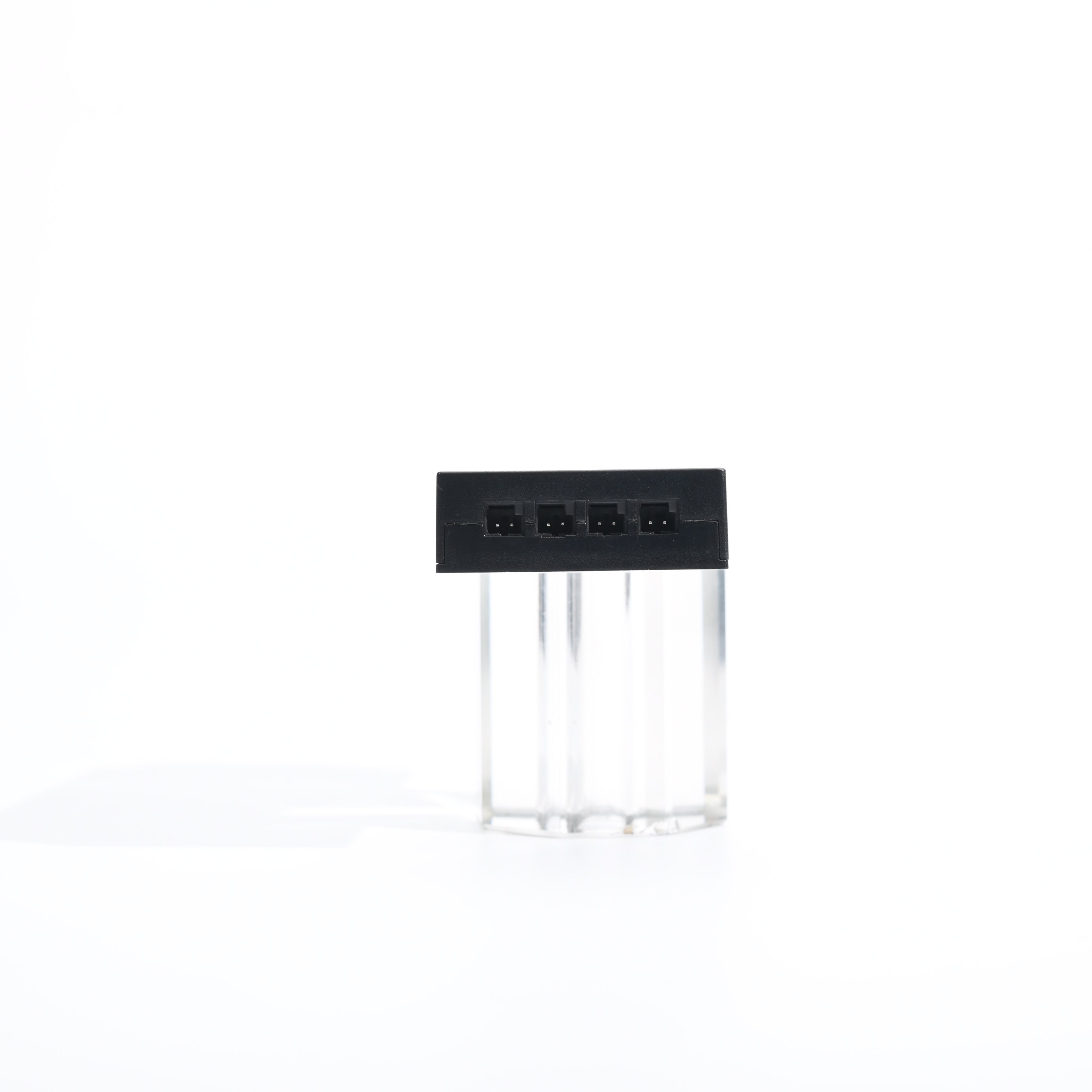
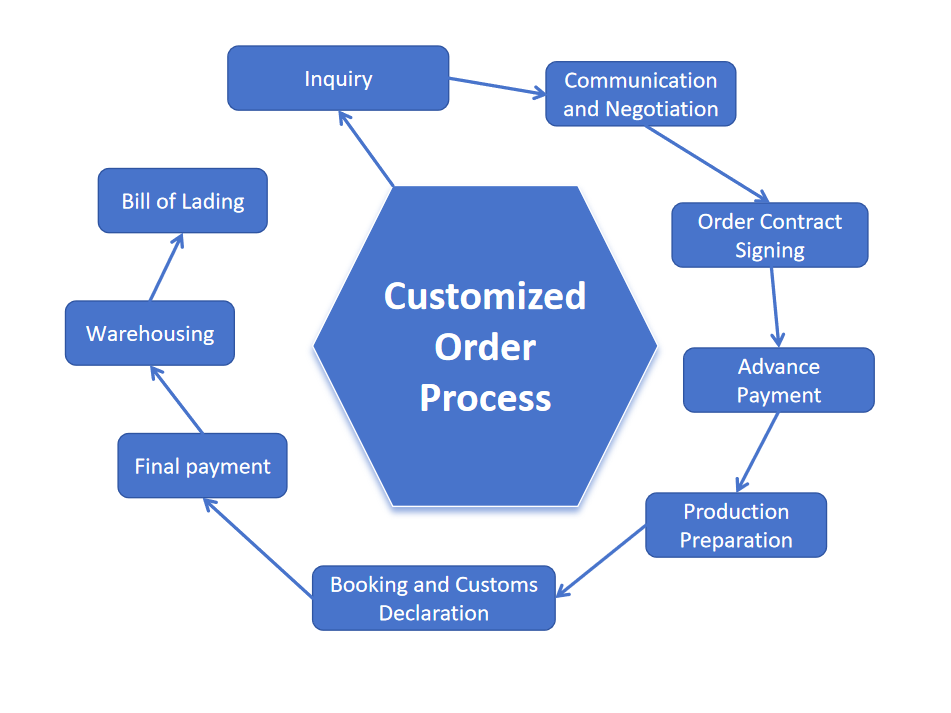
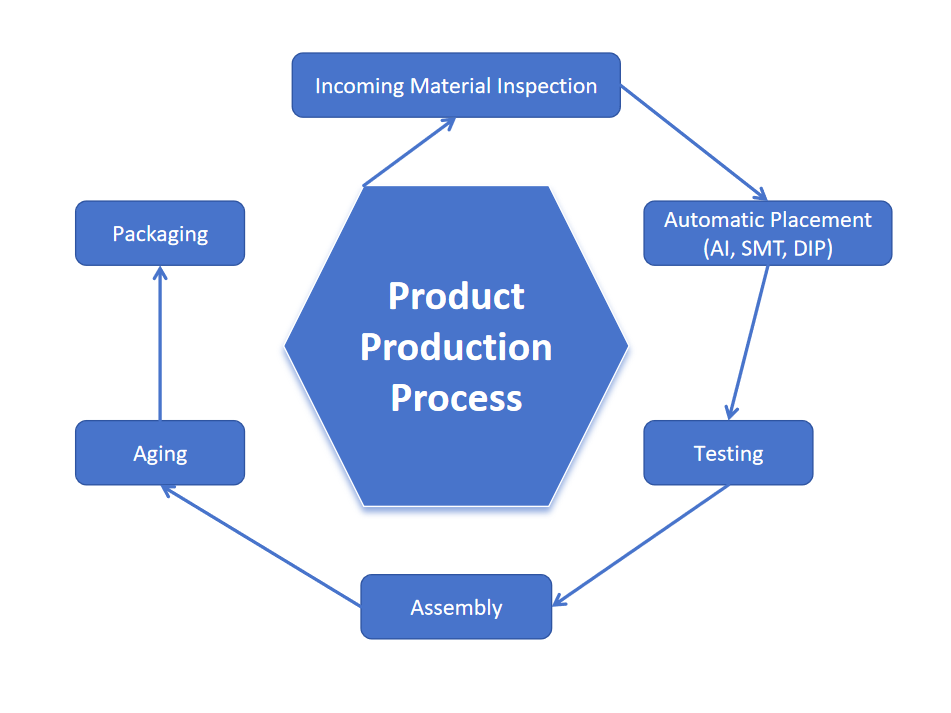
Product Information
| Model: | HJ-LED-24W |
| Type: | AC~DC LED Power Controller |
| Custom Processing: | OEM |
| Certification: | CE / ROHS |
| Whether to Customize: | Parameters can be customized according to needs |
Product Specifications
| Input Voltage: | AC100~240V |
| Input Frequency: | 50/60Hz |
| Output Voltage And Current: | 12V 2A four-way output |
| Output Power: | 24W |
| Work Efficiency: | ≥80% |
| Working Temperature: | -20℃~+50℃ |
| Storage Temperature: | -20℃~+80℃ |
| Humidity: | 10%~90% RH |
| Multiple Protection Functions: | Overvoltage protection, short circuit protection, overload protection, temperature protection |
Applications
Cabinet light strips, LED lighting products
Product Description
What is AC~DC LED Power Controller?
An AC-DC LED Power Controller is a crucial electronic device used in LED lighting systems to convert alternating current (AC) to direct current (DC) and regulate the power supplied to LED lights.
Key Features:
1.AC-DC Conversion: Converts the input AC power (typically 110V or 220V) to DC power through rectification and filtering, which is essential for the normal operation of LED lights.
2.Voltage and Current Regulation: Adjusts the output voltage and current according to the LED's requirements, providing a stable power supply and preventing damage from over-voltage or over-current conditions.
3.High Efficiency: Utilizes efficient power management techniques to minimize energy loss and enhance overall system efficiency, which is important for energy savings and reducing electricity costs.
4.Power Factor Correction (PFC): Some advanced AC-DC LED power controllers feature PFC to improve the power factor, reduce reactive power loss in the grid, and enhance energy utilization.
5.Protection Functions: Includes various safety protections such as over-temperature protection, overload protection, and short-circuit protection to ensure safe operation under different abnormal conditions.
6.Dimming Capabilities: Supports dimming through Pulse Width Modulation (PWM) or analog signals, allowing for intelligent control and energy savings.
